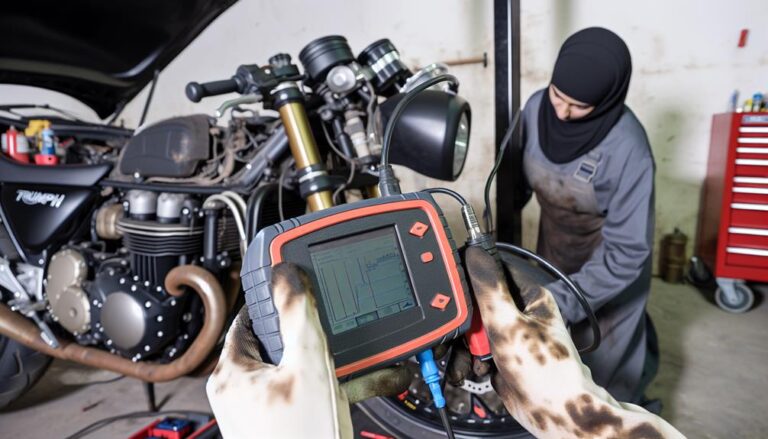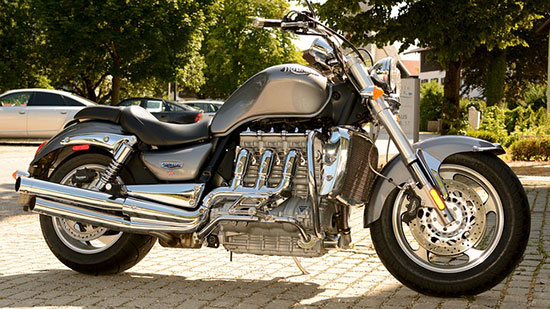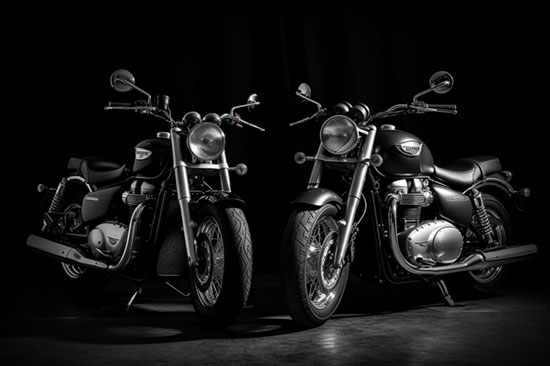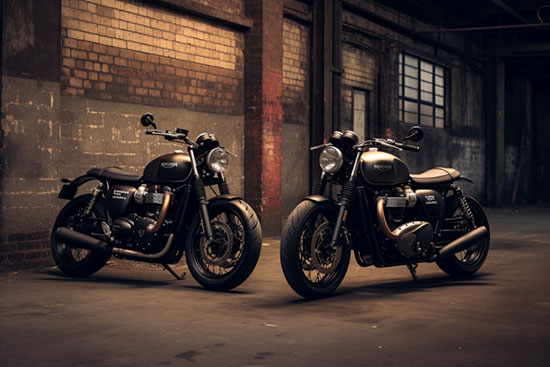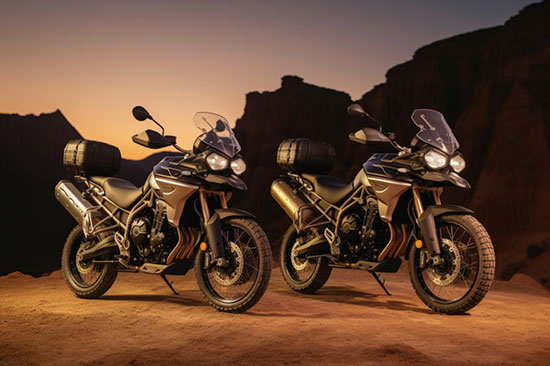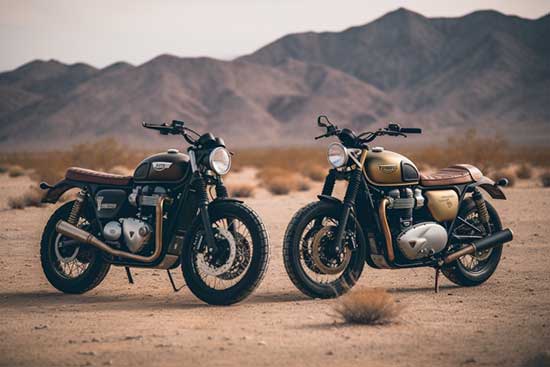It’s no secret that the Triumph Rocket 3 holds the title for the world’s largest production motorcycle engine, a fact that piques the interest of many enthusiasts.
While you’re weighing options between the muscular Rocket 3 and the iconic Harley Davidson, consider not just the raw power, but how each bike defines your riding experience.
The Rocket 3, with its unparalleled torque, offers a surge of power that’s hard to match, whereas the Harley Davidson brings to the table a heritage of smooth, reliable performance that many riders swear by.
Both bikes serve as a canvas for customization, allowing you to tailor your ride to your precise specifications.
As you contemplate which motorcycle best fits your lifestyle, remember that the decision isn’t just about specs and performance; it’s about which bike resonates with your personal riding philosophy and how each model’s unique character and features align with your vision of the open road.
Contents
Engine Power and Performance
When comparing the engine power and performance of the Triumph Rocket 3 and the Harley-Davidson FXDR, it’s clear that the Rocket 3’s 2458cc inline-three engine delivers significantly more horsepower and torque than the FXDR’s 1868cc V-twin, making it a powerhouse on the road.
Triumph’s Rocket III, with its staggering 165hp and 221Nm of torque, easily outpaces the FXDR’s 91hp and 160Nm. This difference isn’t just in the numbers; it translates into real-world performance, where the Rocket achieves 0-60 mph in an astonishing 2.73 seconds, leaving the FXDR trailing with its 4.7 seconds sprint time.
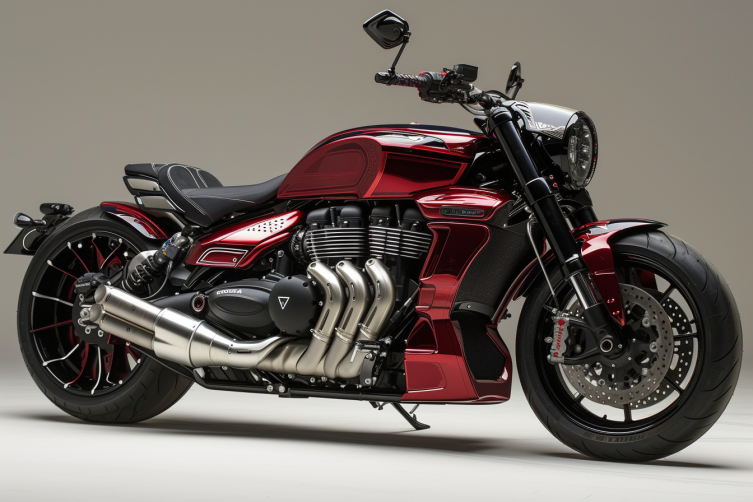
Both models bring advanced features to the table, yet it’s the Rocket’s sheer power and acceleration that set it apart in this head-to-head matchup.
Design and Aesthetics
Harley-Davidson’s FXDR and Triumph’s Rocket 3 each present a masterclass in motorcycle design and aesthetics, reflecting their brand’s rich history and commitment to innovation. You’ll find both bikes stand out, but in distinct ways that cater to different tastes.
- The FXDR boasts a modern, sleek appearance, featuring LED lighting and a digital instrument cluster, highlighting Harley’s push towards contemporary design.
- Triumph’s Rocket 3, on the other hand, showcases a muscular build with a classic yet bold look, complemented by a TFT color display that adds a touch of modernity.
- Both motorcycles offer premium finishes and meticulous attention to detail, from the FXDR’s aggressive stance to the Rocket’s iconic styling.
- Customizable options on both models allow you to tailor the bikes, ensuring your ride is as unique as your style.
Comfort and Ride Quality
Shifting focus from the aesthetic differences that set the Triumph Rocket 3 and Harley-Davidson Road King apart, it’s crucial to examine how each bike measures up in terms of comfort and ride quality.
| Feature | Triumph Rocket 3 | Harley-Davidson Road King |
|---|---|---|
| Riding Position | Aggressive, forward-set footpegs | Classic, relaxed |
| Suspension | Premium, sport-oriented | Well-balanced, comfortable for long rides |
| Wind Protection | Less emphasis, muscular design | Adjustable windscreen, better for highway cruising |
| Ergonomics | Sportier feel, may cause fatigue | Relaxed posture, suitable for extended cruising |
In the Battle: Harley-Davidson Road King vs Triumph Rocket 3, your preference between a sportier feel or classic comfort will guide your choice. Each bike’s heritage plays into its design, from Triumph’s performance edge to Harley’s cruising legacy, affecting overall ride quality.
Technology and Features
In delving into the technological prowess and feature sets of the Triumph Rocket 3 and the Harley-Davidson FXDR, it’s evident that both manufacturers have infused their creations with cutting-edge advancements to enhance the rider’s experience.
- Triumph Rocket 3: Boasts a TFT color instrument cluster, offering advanced display and control options.
- Harley-Davidson FXDR: Comes equipped with a keyless ignition system, enhancing convenience and security.
- LED Lighting: Both bikes feature LED lighting, providing improved visibility and energy efficiency.
- Safety Features: ABS and traction control are standard on both, prioritizing rider safety and stability.
When it comes to ‘Triumph Rocket 3 vs Harley Davidson’ discussions, particularly in the ‘Dyno Battle: Harley-Davidson Road,’ the focus on technology and features is paramount, showcasing how both brands prioritize innovation alongside their storied histories.
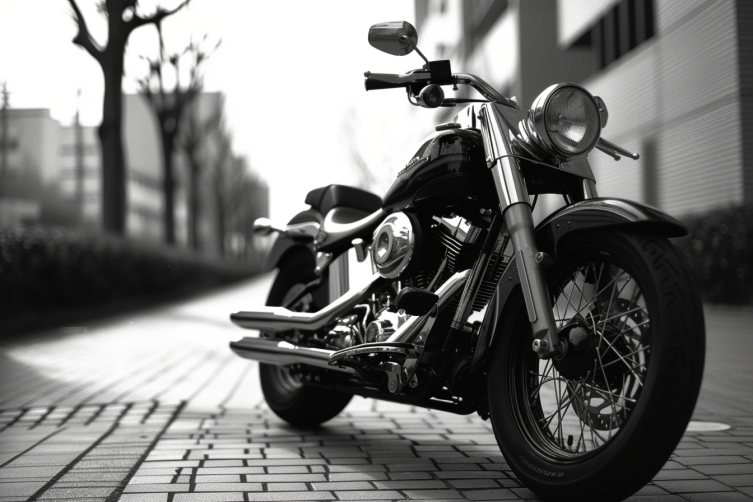
Price and Value Proposition
When comparing the Triumph Rocket 3 and the Harley-Davidson FXDR, it’s crucial to examine their starting prices of $21,900 and $21,349 respectively, to understand their value proposition in the market. Both bikes offer warranties, enhancing their value with peace of mind for buyers.
With customization options aplenty, you’re able to tailor each to your liking, further enriching their value. However, the Triumph Rocket 3 stands out with a significantly higher power of 167hp and torque of 221Nm, offering a superior performance value compared to the Harley-Davidson FXDR.
Conclusion
When deciding between the Triumph Rocket 3 and Harley Davidson, it’s essential to consider your priorities.
The Rocket 3 boasts superior power and torque, showcasing Triumph’s engineering prowess.
Harley Davidson, with its iconic design and smoother power delivery, reflects a legacy of American motorcycle culture.
Both offer extensive customization, but the Rocket 3 edges out in performance, while Harley provides a classic riding experience.
Ultimately, your choice hinges on whether you value raw power or heritage and ride smoothness more.

